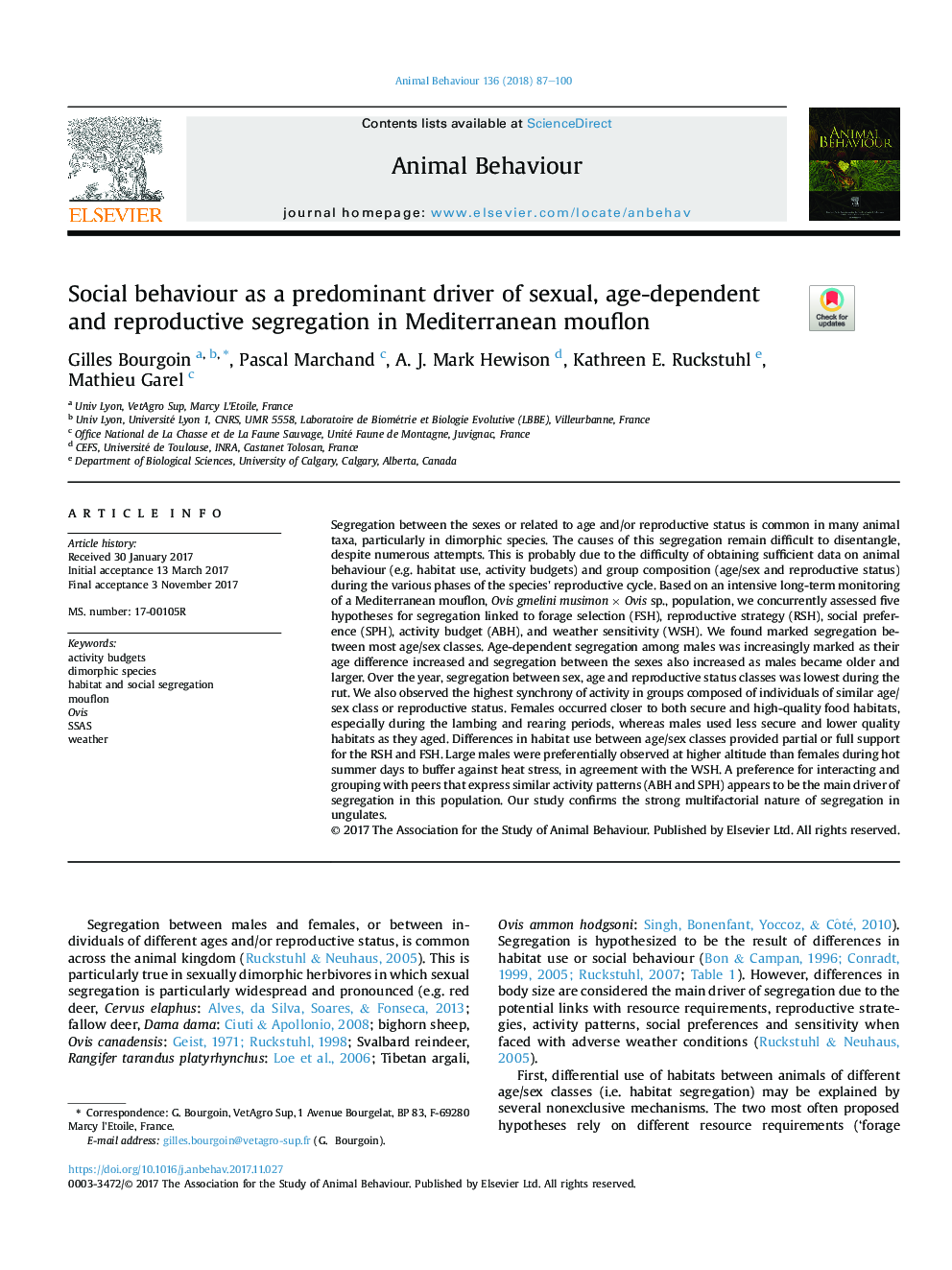| کد مقاله | کد نشریه | سال انتشار | مقاله انگلیسی | نسخه تمام متن |
|---|---|---|---|---|
| 8488678 | 1552192 | 2018 | 14 صفحه PDF | دانلود رایگان |
عنوان انگلیسی مقاله ISI
Social behaviour as a predominant driver of sexual, age-dependent and reproductive segregation in Mediterranean mouflon
ترجمه فارسی عنوان
رفتار اجتماعی به عنوان یک راننده غالب بخش جدایی جنسی، وابسته به سن و باروری در موژول دریایی مدیترانه
دانلود مقاله + سفارش ترجمه
دانلود مقاله ISI انگلیسی
رایگان برای ایرانیان
موضوعات مرتبط
علوم زیستی و بیوفناوری
علوم کشاورزی و بیولوژیک
علوم دامی و جانورشناسی
چکیده انگلیسی
Segregation between the sexes or related to age and/or reproductive status is common in many animal taxa, particularly in dimorphic species. The causes of this segregation remain difficult to disentangle, despite numerous attempts. This is probably due to the difficulty of obtaining sufficient data on animal behaviour (e.g. habitat use, activity budgets) and group composition (age/sex and reproductive status) during the various phases of the species' reproductive cycle. Based on an intensive long-term monitoring of a Mediterranean mouflon, Ovis gmelini musimon à Ovis sp., population, we concurrently assessed five hypotheses for segregation linked to forage selection (FSH), reproductive strategy (RSH), social preference (SPH), activity budget (ABH), and weather sensitivity (WSH). We found marked segregation between most age/sex classes. Age-dependent segregation among males was increasingly marked as their age difference increased and segregation between the sexes also increased as males became older and larger. Over the year, segregation between sex, age and reproductive status classes was lowest during the rut. We also observed the highest synchrony of activity in groups composed of individuals of similar age/sex class or reproductive status. Females occurred closer to both secure and high-quality food habitats, especially during the lambing and rearing periods, whereas males used less secure and lower quality habitats as they aged. Differences in habitat use between age/sex classes provided partial or full support for the RSH and FSH. Large males were preferentially observed at higher altitude than females during hot summer days to buffer against heat stress, in agreement with the WSH. A preference for interacting and grouping with peers that express similar activity patterns (ABH and SPH) appears to be the main driver of segregation in this population. Our study confirms the strong multifactorial nature of segregation in ungulates.
ناشر
Database: Elsevier - ScienceDirect (ساینس دایرکت)
Journal: Animal Behaviour - Volume 136, February 2018, Pages 87-100
Journal: Animal Behaviour - Volume 136, February 2018, Pages 87-100
نویسندگان
Gilles Bourgoin, Pascal Marchand, A.J. Mark Hewison, Kathreen E. Ruckstuhl, Mathieu Garel,
